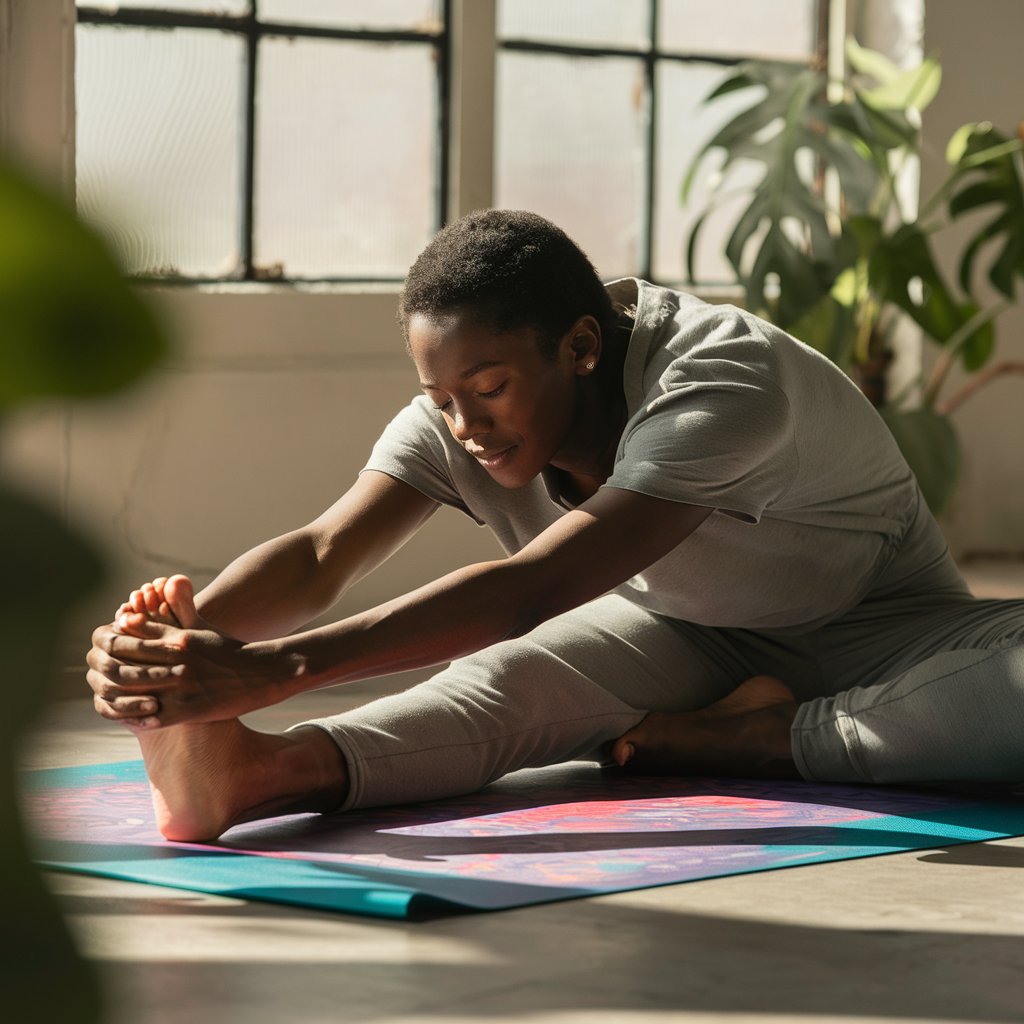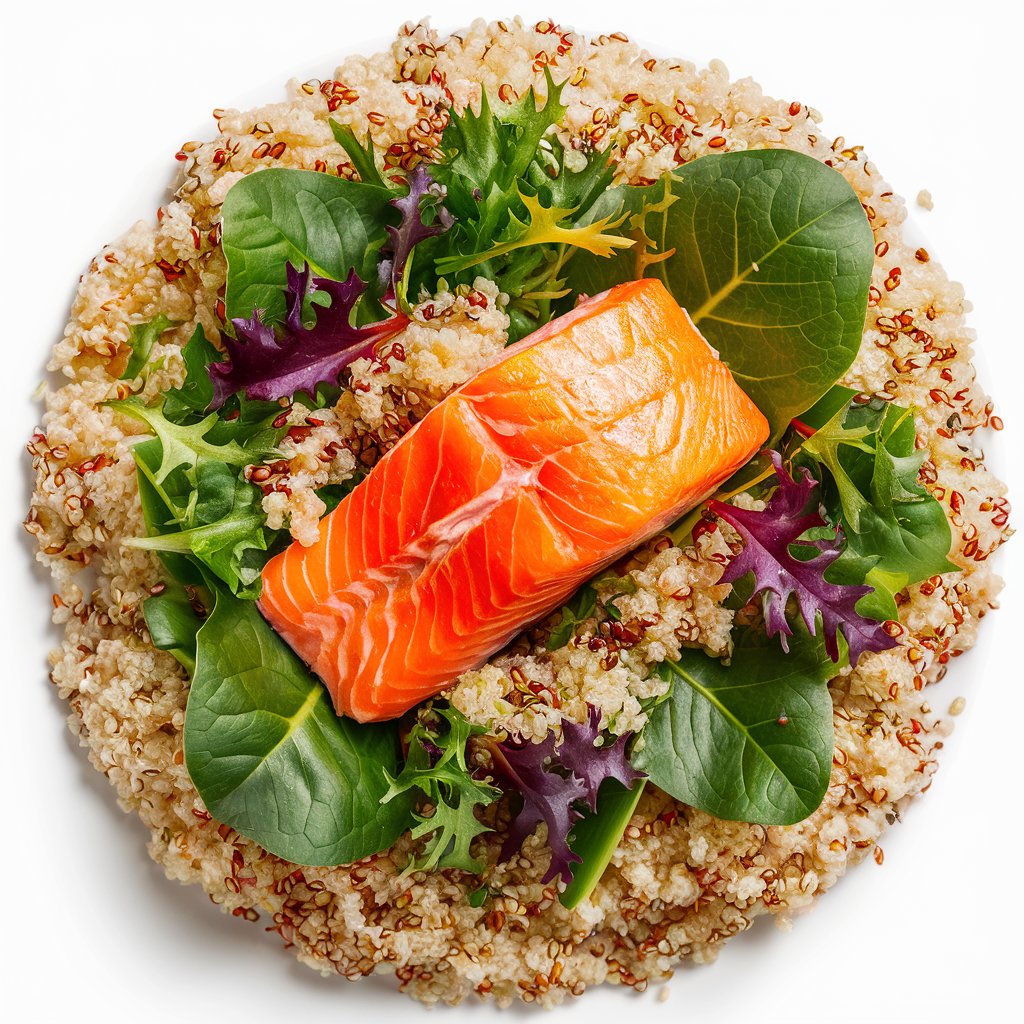Pain-Free Progress: The Key to Delayed Onset Muscle Soreness Recovery
Discover effective delayed onset muscle soreness recovery strategies for optimal fitness and pain-free progress!

Understanding Delayed Onset Muscle Soreness (DOMS)
What is DOMS?
Delayed Onset Muscle Soreness (DOMS) is that nagging pain and stiffness that creeps up after you’ve pushed yourself a bit too hard in the gym. You might feel fine right after, but the next day? Those muscles are screaming. DOMS usually hits 12 to 24 hours after a workout and can stick around for a few days, making you wonder why you thought ten extra squats were a good idea.
Causes of DOMS
So, what causes this delightful soreness? It’s mainly due to tiny tears in your muscle fibers caused by heavy or unfamiliar exercise. It’s like your muscles are throwing a little tantrum for putting them through something new. Eccentric movements—where you’re lowering weights or running downhill—are especially good at causing these microtears. You’ll also hear folks blame lactic acid, inflammation, and enzymes that flood in during repair.
How bad it gets depends on a few things:
| What’s Up | What Happens | How Bad It Hurts |
|---|---|---|
| Exercise Intensity | The harder you go, the more damage you do | More soreness, duh |
| Type of Workout | Eccentric moves are tougher on muscles | Extra painful |
| Workout Duration | Longer sessions ramp up soreness | Takes longer to bounce back |
| Your Fitness Level | Less fit? More pain | High soreness sensitivity |
Knowing why DOMS hits can help you manage it. Start with gentle exercises and add new routines gradually. Also, check out our muscle recovery foods and muscle recovery supplements pages. They might help soothe those aching muscles faster.
Refresh and Rebuild: The Magic of Muscle Recovery
Why Muscle Recovery Rocks
So, you’ve just crushed your workout—now what? Muscle recovery is where the real magic happens. It’s the key to bouncing back stronger, faster, and better every time you hit the gym. Here’s why it matters:
| Benefit | What It Does |
|---|---|
| Power Up | Boosts strength and stamina for your next workout. |
| Ease the Ache | Kicks soreness to the curb so you can stay on track. |
| Grow Big | Helps your muscles get bigger and stronger. |
| Stay Safe | Cuts down the chance of injuries and burnout. |
| Feel Good | Keeps your mood and motivation in check, less fatigue. |
In short, recovery isn’t just an afterthought—it’s a game changer.

What Happens When You Skip It
Think you can skimp on recovery and still see gains? Think again. Skipping proper recovery does more than just make you sore. Here’s how neglecting recovery can mess you up:
| Problem | What Happens |
|---|---|
| Ouch Factor | More sore muscles = fewer workouts. |
| Burnout City | Push too hard, too often, and performance tanks. |
| No Gains | Your body misses out on crucial rebuilding time. |
| Injury Central | Non-stop strain ups your injury risk, sidelining you longer. |
| Motivation Downer | Constant soreness and worn-out feelings can kill your vibe. |
Taking time to recover isn’t just smart—it’s essential for keeping you in the game. To make sure you’re getting the most out of your workouts, give your body the TLC it needs. Think post-workout muscle recovery and fueling up with muscle recovery foods. Your future self will thank you!
Bouncing Back from Sore Muscles: Tips for Easing DOMS
Dealing with delayed onset muscle soreness (DOMS) can be a pain, literally. Luckily, there are ways to handle it that don’t involve suffering through the stiffness. A combo of rest, good eats, and some smart stretching can make all the difference.
Rest Easy but Keep Moving
You need to rest, but that doesn’t mean becoming a couch potato. Light activities like walking, cycling, or swimming can keep the blood pumping and help your muscles mend without overdoing it.
| Activity | How Long (minutes) | How Often (per week) |
|---|---|---|
| Walking | 20-30 | 3-5 |
| Light cycling | 30-40 | 2-4 |
| Swimming | 30 | 2-3 |
Balancing rest with low-key workouts ensures your muscles get the nutrients they need without staying stiff for too long.

Eat Right and Drink Up
What you eat makes a big difference when you’re sore. Foods packed with proteins, carbs, and healthy fats help fix those aching muscles. Add some omega-3s, antioxidants, and vitamins to your game plan to tackle inflammation and speed up recovery.
Staying hydrated is just as crucial. Dehydration can worsen soreness and slow down your body’s healing mojo. Drink plenty of water, especially after breaking a sweat.
| Nutrient | Where to Find It | How Much |
|---|---|---|
| Protein | Chicken, fish, beans | 20-30 grams post-workout |
| Carbs | Rice, quinoa, fruit | 1.0-1.5 grams/kg body weight |
| Omega-3s | Salmon, chia seeds | 1.6 grams/day (men), 1.1 grams/day (women) |
| Antioxidants | Berries, nuts, spinach | 5 servings of fruits/veggies |
For more tips on eating your way out of soreness, check out our posts on muscle recovery foods and muscle recovery supplements.
Stretch It Out and Roll With It
Stretching and foam rolling can work wonders on sore muscles. Stretching helps with flexibility and keeps the blood circulating to those tight spots. Foam rolling, on the other hand, gets into the nitty-gritty knots in your muscles, helping you feel better faster.
| Stretch | How Long (seconds) | When |
|---|---|---|
| Static stretches | 30-60 | After workouts |
| Dynamic stretches | 15-30 | Pre-workout |
| Foam Roll | How Long (minutes) | When |
|---|---|---|
| Quads | 1-2 | After workouts |
| Hamstrings | 1-2 | After workouts |
| Calves | 1-2 | After workouts |
For a deep dive into these techniques, pop over to our post on post-workout muscle recovery. These simple moves can really help you beat DOMS and get back to feeling good in no time.
Ready to take on DOMS like a champ? With a bit of rest, some tasty, muscle-loving foods, and a trusty foam roller, you’ll bounce back faster and keep chasing those fitness milestones.
Advanced Ways to Bounce Back from Muscle Soreness
Improving how you recover from delayed onset muscle soreness (DOMS) can really help you feel better faster. Here are some ways you can ease pain, cut down on swelling, and keep your muscles in top shape.
Get a Massage
A good massage is awesome for sore muscles and speeding up recovery. It boosts blood flow, bringing oxygen and nutrients to tired muscles, which helps them heal. Plus, it can melt away muscle tension and help you relax.
| Massage Type | Perks |
|---|---|
| Swedish | Eases muscles and boosts circulation |
| Deep Tissue | Reaches deeper muscle layers and connective tissue |
| Sports | Aims to prevent and fix sport-specific injuries |
Getting massages regularly can make you more flexible and reduce muscle stiffness. Curious about more recovery tips? Check out our piece on post-workout muscle recovery.

Cryotherapy and Hot-Cold Therapy
Cryotherapy means using cold temps to reduce swelling and muscle pain after tough workouts. There’s also contrast therapy, which swaps between hot and cold treatments to help manage pain and speed up the healing process.
| Therapy Type | What It Does | How Long |
|---|---|---|
| Cryotherapy | Reduces swelling | 3-5 minutes |
| Hot Therapy | Relaxes muscles | 10-15 minutes |
| Contrast Therapy | Improves circulation | 10-20 minutes |
Both cryotherapy and hot-cold therapy can shave time off your recovery and boost muscle performance. For those keen on diet support, dive into our article on muscle recovery foods.
Compression Gear
Wearing compression gear can help muscles recover by supporting them and stopping swelling after exercise. These garments are made to up blood flow and cut down muscle soreness.
| Garment Type | Perks |
|---|---|
| Compression Sleeves | Boosts circulation, lowers muscle movement |
| Compression Socks | Prevents swelling, improves recovery |
| Compression Shorts | Helps lower body recovery |
Compression wear might also boost your workout performance and lessen the effects of DOMS. Want more recovery advice? Take a peek at our info on muscle recovery supplements.
Incorporate these recovery techniques to get back on your feet faster and keep those muscles healthy.
Preventing Future DOMS
Delayed onset muscle soreness (DOMS) is that annoying ache you feel after pushing yourself at the gym. If you’re into fitness or bodybuilding, you’re probably no stranger to it. But hey, wouldn’t it be awesome if we could dial down that soreness? Let’s chat about some slick ways to keep DOMS at bay: start slow, warm up and cool down right, and tune in to your body’s signals.
Gradual Progression in Workouts
Think of your workouts like a marathon, not a sprint. Jumping into heavy lifting or intense cardio without easing into it is asking for trouble. Gradual progress is your best bet—let your muscles catch up with your ambitions.
| Workout Type | Suggested Increase Per Week |
|---|---|
| Weightlifting | 5-10% more weight or reps |
| Cardio | 10-20% longer or harder |
| Flexibility | One extra stretching session |
Don’t rush, buddy. Your gains will be sweeter and your muscles happier.
Warm-Up and Cool Down Routine
Skipping a warm-up might save you time now, but it’s a one-way ticket to DOMS-town. Warming up gets the blood flowing to your muscles, prepping them for the workout. Cooling down, on the other hand, helps your heart rate chill and muscles start healing.
Warm-Up Routine (10-15 minutes)
| Activity | Duration |
|---|---|
| Dynamic stretches | 5-10 min |
| Light cardio | 5 min |
Cool-Down Routine (5-10 minutes)
| Activity | Duration |
|---|---|
| Static stretches | 5-10 min |
| Deep breathing | 2-3 min |
Check out more details in our article on post-workout muscle recovery.
Listening to Your Body
Your body’s signals are like those warning lights on a car dashboard—you can’t ignore them. Fatigue and discomfort might be your body’s way of saying “Hey, ease up!” Persistent soreness means it’s time to reduce intensity or take a rest day. Distinguish between normal post-workout ache and a potential injury.
Keep tabs on your fitness journey by jotting down how you feel after each workout. Track your soreness and recovery in a journal—your muscles will tell the story if you listen.
Got a craving for recovery tips? Dive into our articles on muscle recovery foods and muscle recovery supplements.
By following these tips, you’re setting yourself up for a smooth, strong, and DOMS-free fitness adventure. Now, go on and crush that next workout!

Finding the Right Fitness Help
Getting the right fitness advice can make a real difference in how well and fast you recover from muscle soreness. Let’s chat about why seeing a trainer or physical therapist is a good idea, understanding your own recovery needs, and tweaking your workouts for the best results.
Chatting with a Trainer or Physical Therapist
Talking to a certified trainer or physical therapist can steer your recovery in the right direction. These pros know the ins and outs of human movement and can whip up a plan that suits you.
Regular check-ins with a trainer can help you nail down your exercise form, cutting the risk of injury and giving muscle soreness the boot. On the flip side, physical therapists are great at specialized rehab to get your muscles back in shape. Let’s compare why you might choose one over the other:
| Who to See | Why You Should See Them |
|---|---|
| Trainer | Custom workouts, avoid injuries, guide exercise form |
| Physical Therapist | Rehab plans, target therapies, manage pain |
Knowing Your Own Recovery Needs
Everyone’s body is a little different when it comes to bouncing back from workouts. It’s really important to get a handle on what your body needs. Things like age, fitness level, and how healthy you are overall all play a part. If you’re in your 30s, 40s, or 50s, you might bounce back differently than someone younger.
Paying attention to how your body feels can help you tailor your workouts. Keep an eye on soreness, energy levels, and flexibility. Logging these details in a journal can be a game-changer. It helps you see patterns and know when to rest more or tweak your exercises.
Tweaking Workout Intensity and Frequency
Changing how hard and how often you work out is key for helping muscles recover. It’s pretty common to think you can do more than you actually can, which can lead to overdoing it. A balanced approach, like increasing the intensity bit by bit, can help dodge serious soreness and injuries.
Here’s how to make those changes:
| What to Tweak | How to Do It |
|---|---|
| Intensity | Up by no more than 10% each week |
| Frequency | Give yourself at least 48 hours between tough workouts |
| Recovery Time | Base it on how sore you feel |
Working with fitness pros and knowing your own needs can really up your game in beating muscle soreness and getting stronger. For more tips on helping your muscles recover, check out muscle recovery after workout and muscle recovery foods.

